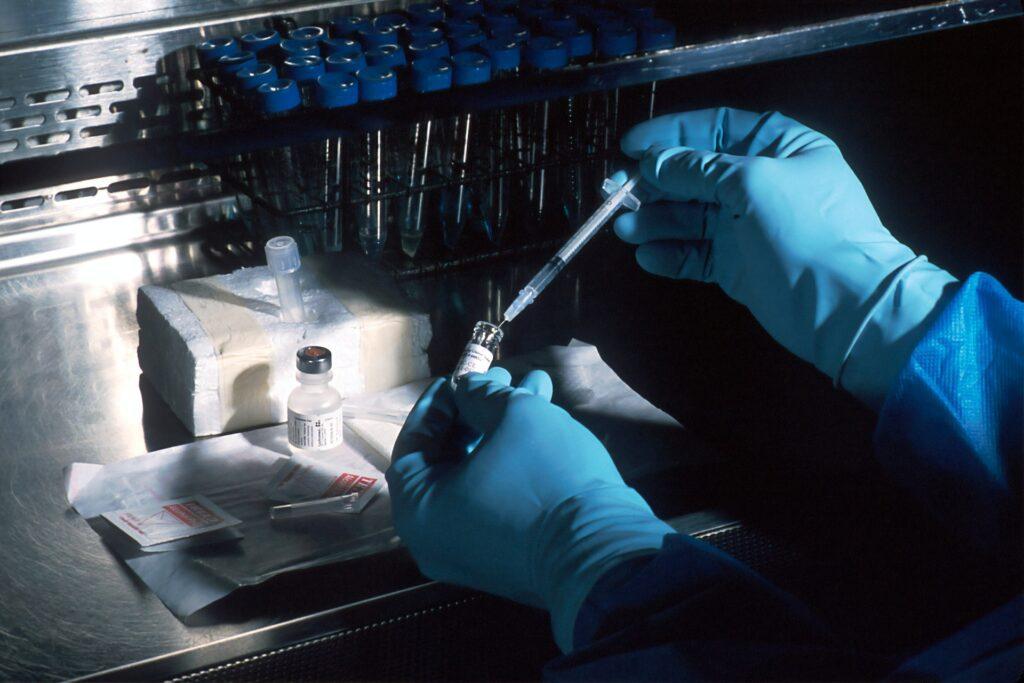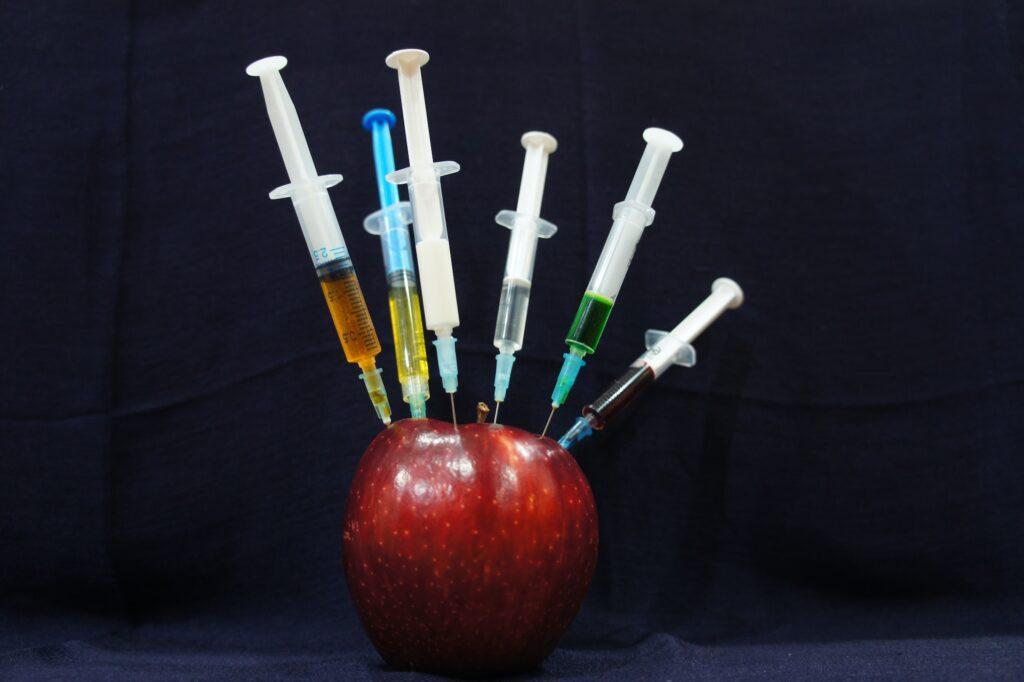It is defined as the study of the genome. Genomes are nothing but the collection of genes. In the study of genomics the most important project has been HGP (Human Genome Project). There have been other projects like the 100k Asia Genome Project under which genetic material of 1 lakh individuals will be collected. In 2009 India became the sixth country to sequence the human genome. Recently CSIR has started a project of collecting the genetic material of 1000 rural youths.
About human genome project
It started in the year 1990 and completed in 2003. The report of human genome project was published with following details
- There are 25000 genes in human genome
- The functions and locations of most of the genes are known
The implications of the developments in the field of genomics are :
- Pharmacogenomics
- Gene Therapy
- Gene Doping
- Genome Editing
- Synthetic Genome
- 3 Parent Baby
- Gene patent

Pharmacogenomics
It is also known as personalized medicine, the premise is that towards the same stimulus the response of different individuals differ. Therefore the genomic analysis should be the basis of the treatment. There is a combination of two words: pharmaceuticals and genomics.
The possible challenges are –
- Genomic analysis of the whole population has to be carried out.
- There will be resistance within the medical fraternity.
- Pharma companies will struggle to ensure the availability of all the possible dosages in the market all the time.
- Security of the genomic database.
Gene Therapy
It is used for the treatment of genetic disorders like haemophilia, colour blindness, downs syndrome, sickle cell anaemia etc. Here the target cell is identified and in that a particular gene is transferred with the help of a vector which could be virus, plasmid or artificial chromosome. Initial few results of gene therapy were disastrous and it was banned but in 2003 when the report of the human genome project was made public the ban was partially eased and since then it has been used in the successful treatment of many genetic disorders.
Gene Doping
It is defined as the use of banned substances and banned methods to enhance the performance and to prevent doping WADA has brought the whereabouts mechanism. Under this every athlete has to specify two locations every week and the blood as well as urine sample is collected and if the tests confirms the presence of banned substances then the athlete could be put under suspension.
The banned methods are blood doping and gene doping. After the Rio Olympics WADA announced that there were athletes using gene doping but because of various legal and ethical concerns when it comes to identifying such athletes .
What is doping ?
In gene doping an athlete gets a gene transferred because of that the synthesis of certain substances in the body increases which in turn improves the performance. Doping has not yet been defined by even one country as a crime, to establish that whether a person was using gene doping or not genetic material from 3 individuals are required i.e. athlete and the biological parents. As doping is not a crime therefore it will be extremely difficult to collect the genetic material of athletes without consent as well as the biological parents.
One more ethical concern is that not only in human beings but it can be used even in animals which are a part of modern commercial sports.
Genome editing
In genome editing a certain part of the DNA is removed and replaced by some other part. At present the most effective method for genome editing is crispr cas9.
CRISPR is clustered regularly interspaced palindromic repeats and Cas is CRISPR associated. It was discovered by the scientist Doudna and Charpentier while studying the immunity of a bacteria showing resistance against the viral infection.
In the DNA of the bacteria they observed a pattern that is regularly repeating a palindromic section with a unique sections of DNA in between. For this unique section of DNA there was a complementary RNA which in turn was associated with the enzyme Cas.
Whenever there is a viral infection it inserts its DNA in the bacterial cell and if a portion of the viral DNA matches with the unique DNA in the bacterial cell then the complementary RNA will pair with that portion of viral genetic material which is having the same sequence as that of the unique portion of the bacterial DNA.
Once the pairing is completed then the enzyme Cas will cut the viral DNA from the specific locations, the DNA will try to repair itself and in the process will undergo mutation thereby it will get deactivated. The bacterial genome will then incorporate the excised portion into its DNA so as to deal with future infections.
Applications of CRISPR Cas9
- It has been used for designer babies
- A Chinese scientist Hi Jiankui used CRISPR Cas9 for imparting the character of HIV resistance.
- It has been used in germline editing i.e. genome editing of the gametes so as to remove the genes responsible for hereditary diseases.
- A Chinese scientist is using CRISPR Cas9 for the treatment of lung cancer.
- In Britain genome editing of embryos has been permitted to study the developmental process.
- It has been used for genome editing of the crops so as to make them resistant to viral infection and fungal infection.
- The negative outcome could be in the form of extremely lethal biological weapons and superhumans.
Synthetic Genome
After the success of the human genome project, read the focus has shifted towards Human genome project writing i.e. to synthesize a DNA with certain specifics in the lab. But it has got some serious ethical questions. Sometime back an American Company J Craig Venter Institute announced that they have developed the world’s first self replicating synthetic cell. They took the DNA from the bacteria mycoplasma mycoides and synthesized a DNA which was almost completely based on the DNA of this bacteria. It was transferred into the bacteria mycoplasma Capri Colum and this bacteria was still dividing. It was described as world’s first self replicating synthetic cell i.e. Mycoplasma mycoides JCVI-syn1.0
But the critics were not ready to accept. According to them this can only be described as a synthetic genome. The plausible applications of synthetic genome are
- To develop a bacteria which can transform atmospheric carbon dioxide into biofuel.
- TO develop new types of vaccines.
- To develop bacteria capable of removing pollutants like plastics and pesticides.
- To establish a minimal genome i.e. the least number of genes required by a cell to be alive, they took a bacteria Mycoplasma genitalium with 543 genes and they kept on reducing their number. Finally, they were able to establish that this bacteria requires at least 417 genes to be alive. This is the smallest figure of genes ever established. It was defined as Syn 3.0. It will have the implications of understanding evolutionary biology.
- Possible misuse could be in the form of biological weapons that can be developed.
Gene Patent
It is one of the most controversial areas associated with modern biotechnology, according to an estimate around 5000 patents have already been issued for various human genes. According to TRIPs gene patent can be issued if following conditions are fulfilled:
- It should be novel.
- It must involve an inventive step.
- It must have commercial use.




